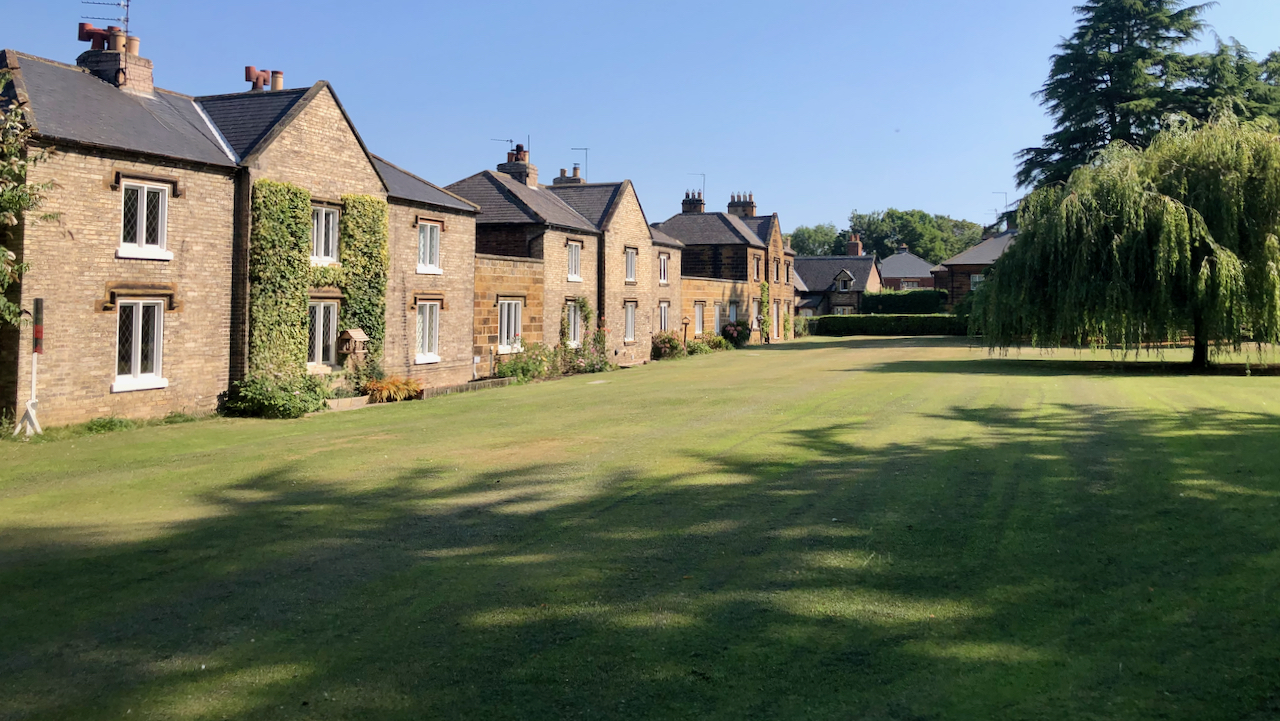Perhaps the most least known village of Teesside. Its tweeness belies its proximity to the petrochemical industries of the Wilton International Site, or whatever it calls itself nowadays.
Wilton offers plenty of photogenic opportunities. The ‘Castle’, rebuilt 1807 and now a golf club; the old school, built 1855, and the church, rebuilt 1907/8. I think these cottages were constructed for the estate workers. It’s a familiar view, once a pleasant short-cut for me on my cycle to work at I.C.I. Wilton.
In 1748, Wilton came into the possession of Sir James Lowther, who inherited the Earldom of Lonsdale. He was quite a character: eccentric, cruel, avaricious and greedy1Horton, Minnie C. “The Story of Cleveland”. Page 321. Cleveland County Libraries. 1979 ISBN 0 904784 09 6.
He hatched a hare-brained scheme to increase his land holding by reclaiming a large tract of land at the Tees estuary from Cargo Fleet to East Coatham. Bear in mind this was many decades before the construction of the South Gare breakwater was even thought about2Ibid. Page 322..
Irish navvies were brought in to construct a sea bank of soil topped with sods. The work was begun in 1777 but when the Earl extended his scheme far beyond his boundaries, trouble began with the Turners, the owners of the neighbouring Kirkleatham manor.
Despite the objections, the Earl continued, but with the scheme almost complete, the men’s wages did not arrive in time and they left the embankment unfinished and returned home. Shortly afterwards the bank was destroyed when a storm breeched it. The cost was over £60,000 — almost £7m in today’s money.
There is no trace of the embankment today.
As he grew older, the Earl grew more eccentric. Within the lavish walls of Wilton Castle, he became convinced he was a pauper and claimed parish relief, This was administered to him in the beautiful drawing room of the Castle, by an official three times a week. Apparently he went to the drawing room at the exact hour three times a week, and if the official was not there punctual, the Earl “told him off” in language which was more “forcible than polite“3Cleveland Re-visited | Cleveland Standard | Saturday 27 May 1933 | British Newspaper Archive’. 2022. Britishnewspaperarchive.co.uk <https://www.britishnewspaperarchive.co.uk/viewer/bl/0003490/19330527/064/0004> [accessed 25 July 2022].
When he died in 1802, nearly £100,000 in gold was found in his bedroom. The Earldom of Lonsdale became extinct but was revived by another branch of the family 95 years later4Horton, Minnie C. “The Story of Cleveland”. Page 322. Cleveland County Libraries. 1979 ISBN 0 904784 09 6.
The estate, in a pretty ruinous state, passed to Sir John Lowther, but as fortune would have it, a considerable amount of valuable ironstone was discovered under his land.
And the rest, as they say, is history.
- 1Horton, Minnie C. “The Story of Cleveland”. Page 321. Cleveland County Libraries. 1979 ISBN 0 904784 09 6
- 2Ibid. Page 322.
- 3Cleveland Re-visited | Cleveland Standard | Saturday 27 May 1933 | British Newspaper Archive’. 2022. Britishnewspaperarchive.co.uk <https://www.britishnewspaperarchive.co.uk/viewer/bl/0003490/19330527/064/0004> [accessed 25 July 2022]
- 4Horton, Minnie C. “The Story of Cleveland”. Page 322. Cleveland County Libraries. 1979 ISBN 0 904784 09 6

Leave a Reply